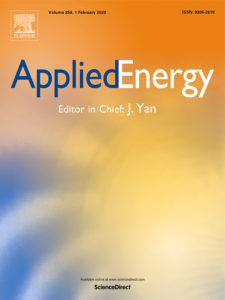Impact of deep wind power penetration on variability at load centers
Impact of deep wind power penetration on variability at load centers
- February 2019
- Peer-Reviewed Articles
- Multiple
 Waite, M., & V. Modi. (2019). Impact of deep wind power penetration on variability at load centers. Applied Energy, 235(1), 1048-1060.
Waite, M., & V. Modi. (2019). Impact of deep wind power penetration on variability at load centers. Applied Energy, 235(1), 1048-1060.
ABSTRACT: Increasingly, variable renewable energy capacity will be added distant from load centers in much of the world. How such intraregional heterogeneity in variable supply and load will impact the energy system in a deep renewable penetration scenario is studied here. Heterogeneous reliability requirements imposed by such scenarios are not well understood. Some unique geographic settings, such as the Nordic grid with weeks of pumped hydro backup, manage to circumvent this issue without significant curtailment, but most regions have yet to achieve the renewable energy levels at which the issue will arise. Using simulations of wind power expansion in New York State, we illustrate the intraregional effects by quantifying the net load, net load ramping, operating reserve and regulation requirements, and the associated distribution of infrastructure investments and ancillary services. The study finds that only at wind capacities exceeding 100% of the average statewide load does the wind-generated electricity meet significant portions of the distant demands. However, the peak net load in these areas is not reduced, requiring that dispatchable generation capacity be maintained. Moreover, the net load becomes highly variable, with large ramp rates that increase ancillary service requirements (operating reserves and frequency regulation) to ensure reliable system operation. A major finding is that the additional ancillary service requirements become more concentrated in the distant load centers. A second significant finding is that while transmission capacity upgrades greatly increase the wind-generated electricity that reaches load centers, the increased variability in that supply can exacerbate both the magnitude and heterogeneity of ancillary service requirements. These services would presumably be provided by the same local dispatchable resources that would now be operating at lower capacity factors but with higher variability. Such changes in the scale and distribution of intraregional integration measures and infrastructure investments may require new energy planning approaches and market structures to achieve anticipated future renewable energy targets.




